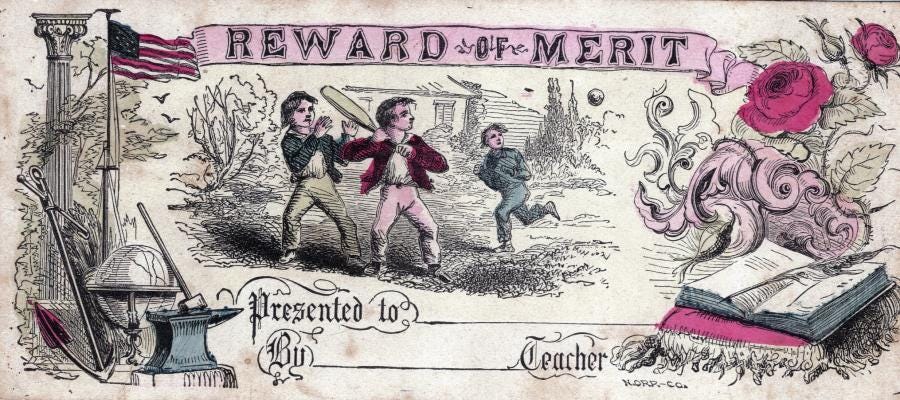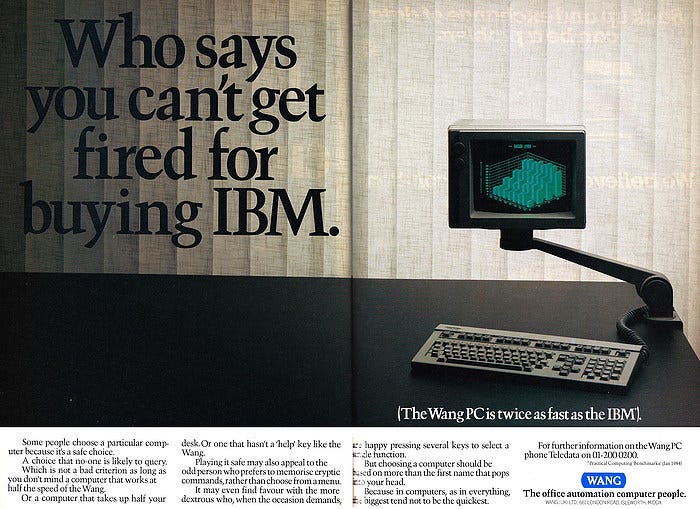Reading Length: 10 minutes
Keywords: Sociology, Meritocracy, Game Theory
Why do organizations from corporations to government agencies so often seem to fail to live up to meritocratic standards? Even if an organization espouses values of efficiency and fairness, it is unlikely their personnel decisions fully reflect such values. Is this because meritocratic ideals are simply difficult to enact? Or are people being deceptive when they claim to exalt meritocracies? What are other mechanisms that could lead to the breakdown of a meritocracy?
In an interesting recent paper exploring this issue, a group of researchers theorize and test a theory for how ‘high-status advantages’ can emerge in a context where relative performance is supposed to organize a hierarchy.1 A high-status advantage occurs when an individual is preferred “beyond the the level that can be justified on the bases of ‘objective’ performance criteria.” Put another way:
Status advantages are outcomes from resource-allocation decisions where higher-status actors earn an allocation that is disproportionate to their relative quality.
An obvious example of a high-status advantage would be a racial bias that leads a person of one particular skin-color to be given a higher preference or valuation due to their skin-color, rather than for ‘objective’ reasons like measurably high performance. High-status advantage need not, however, stem from any particular attribute. It can stem from being high-status itself and engender its own further status advantage.
Before building their own theory of status advantage, the researchers first consider the prevailing theory, the Socially Endogenous Inferences (SEI) model. If something is endogenous that means it is internal, or in this case internally generated by the system itself. In this case that means we should expect that the SEI model predicts that a status advantage will arise as a normal course of action whenever people make inferences.
Socially Endogenous Inferences
More specifically, the authors provide this summary of the SEI model:
…status advantages as emerging when performances are difficult to assess ex ante. In these settings, decision-makers infer the qualify of a performance from the choices of prior decision-makers, as encoded in a publicly observable status hierarchy. Each decision is based not on a direct assessment of quality but on others’ assessments (Which in turn are based on others’ assessments, and so on)., so one actor may rise in status relative to another actor of equal quality merely because chance factors awarded the former with an early lead in status. Thus, ironically, the endogeneity of such reasonable inferences tends to have the cumulative effect of decoupling status from quality.
In other words, status overrides quality when people use inferences as a shortcut. They see that others have awarded a person or product with higher-status, so they therefore assume it is indeed worthy of that high-status on the basis of merit, even if it is not.
A limit of the SEI model is that it only explains how status advantages can arise when individuals are making personal inferences about status hierarchies.
The Third-Order Inference (TOI) Model
There are conceivably other ways that status advantages can emerge.
Our key point of departure is the recognition that decision-makers in meritocratic contexts often face a different inference problem than the one assumed by the SEI model. In meritocratic contexts, decision-makers are often interdependent with key resource-holders for the success of their decision. The “best” decision in such contexts is often the one that most effectively takes into account their likely reactions. Accordingly, the most salient challenge for a decision-maker is to infer how various choices are most likely to be evaluated by a third party.
Here the authors introduce the importance of the ‘third-order’ inference. To give an illustrative example, consider a manager hiring an employee. The manager must worry not only about the quality of the employee, but also how the manager’s boss will perceive the quality of that employee, because the manager is assessed on their hiring skills. The manager’s boss is now the ‘third-party’ that the manager must infer about.
A famous aphorism is that:
Nobody ever got fired for buying IBM.
Choosing the safest option is a third-party inference. Even if IBM is not considered the best choice on its merits, it is likely that others will approve of the decision because of its reputation as the safest option. The authors quip “Did everyone really prefer IBM?”.
In yet another context the authors provide, consider a graduate student writing a paper. They must pull not only from previous literature that they assume the reader will find interesting, but also approved sources that their supervising professor would expect to find. This leads to “ceremonial” citations that serve as signals of -ingroupness rather than quality of ideas.2
Comparing the SEI and TOI Models
Socially Endogenous Inferences and Third-Order Inferences both explain how status advantages can arise. Can both models be operative in a single context? When should we expect that coincidence to occur?
The researchers provide this helpful table to clarify the differences between the two models.
Consider the example of choosing a surgeon to operate on oneself. Clearly my main concern is my own health, not what others think of the surgeon I choose. Therefore in this example interdependence is low. However, quality uncertainty is high because I am not a medical expert and do not spend any time considering the issue. The table shows that the SEI model is operative (top-left cell). I will choose my surgeon based on a pre-existing status hierarchy that others have created. Perhaps I will ask my friends for a surgeon recommendation, or consult the many professional publications that rank doctors.
Now consider the case where quality uncertainty is negligible. Perhaps a fashion aficionado is considering a high-end purse to purchase. Being a hobbyist, the consumer is perfectly aware of which purses have higher quality leather than others and such, so there is zero quality uncertainty. The fashionista, however, must consider what others will think of the purse she purchases, so she must consider how they rank the purses. This is a pure case of SEI that is in the bottom left cell of the table.
Mixtures of quality uncertainty and outcome interdependence will result in a mixture of SEI and TOI decision-making models at play to generate status, even though in many situations all that should matter is the merit, the objective quality, of the decision.
Testing TOI
Is there any evidence that Third-Order Differencing is actually how people make decisions? To empirically validate this theory, the researchers conduct three different experiments.
In the first study, people taste and rank chocolate, which is then arbitrarily assigned to a branded logo. The chocolate, unbeknownst to the participants, is the exact same, however taste preferences are still formed. The participants are then told they favor either the low-status branded chocolate (Hershey’s Kiss) or the high-status brand (Godiva). The participants were then instructed to choose a chocolate from the two to include in a gift basket and were told that if they voted for the brand that ultimately was chosen, they would receive a $50 bonus.
Perhaps unsurprisingly, participants were likely to change their flavor preference from low to high status (Hershey’s to Godiva) after learning they at first favored Hershey’s. Furthermore, participants were more likely to recommend Godiva chocolate even if they thought Hershey’s was superior in taste. This result is probably intuitive to common understanding, but sets the baseline for the next two experiments.
In the next study, a different set of participants were told to assess and rank candidates to be a police chief for a town. One candidate was female, while another was male. After indicating which candidate the participant preferred, some information about the town was revealed to them. The town was described as either rural and conservative or urban and progressive. As a result of learning more about the town (the third-order inference), participants were likely to switch their recommended candidate to align (male to rural), even if they thought the other candidate was objectively superior.
The researchers summarize the results of these first two studies:
With decisions involving both chocolate and the hiring of police chiefs, a significant proportion of participants overrode their first-order beliefs about which choice was higher quality, but they did so only when pressured to coordinate with an audience for whom the higher-status option was conventionally believed to be best.
It could be argued that participants are actually behaving rationally and optimally. If the town truly did favor a male candidate and believe that it was a better choice, even if that candidate was on some dimensions inferior to a female, then it is hard to argue that the participants are not simply incorporating more information into their recommendation.
Impressing the Hostess
In the third experiment, a new set of participants are told they are to gift the hostess of a party some chocolate. Similar to the first study, participants can choose to either gift high-status (Godiva) or low-status (Hershey’s kiss) chocolate to the hostess. What the researchers are looking for is an explicit disregard of either first-order (the participant’s own preference) or third-order (the Hostess’ preference) taste of quality:
The goal is to test whether status advantage can emerge under a situation of third-order inference even when neither the decision-maker nor the audience with whom she is coordinating is thought to prefer the high-status producer.
If the participant ignores both the preference of herself and the hostess, that is clear evidence of a high-status advantage arising in the context of Third-Order Inferencing.
The researchers found that even when the participants know that the hostess prefers Hershey’s kisses, they still choose to gift her Godiva 46% of the time. The participants chose to “select the gift that is conventionally regarded as the better gift, and thus impresses the hostess via the consideration and respect signified by choosing what is commonly known to be the best gift.”
In other words, these participants believe that the best gift is not what the hostess actually prefers, but that the best gift is the gift that is commonly thought to be the best gift. This sounds like a circular logic, and it is this circularity that can create a lock-in effect of a rigid status hierarchy disattached from product quality.
As the third study showed, status advantages can arise even when the decision-maker believes the quality is inferior, and they know that the third-party involved also believes the quality is inferior.
The upshot is that in many contexts, the importance of aligning and coordinating with others can overweigh the importance of creating an actual meritocracy. This can lead to rigid status hierarchies that can only be shaken up by a public and widespread awareness of a ‘quality gap’. It does not matter if I learn that something is really low quality, because as long as others continue to believe in it, third-order inferences will override quality. Once everyone is convinced that everyone else is also convinced about the quality, however, the status hierarchy regime will collapse.
Correll et al., ‘It’s the Conventional Thought that Counts: How Third-Order Inference Produces Status Advantage’, 2017.
The authors cite Adatto, Kiku, & Cole, “The Functions of Classical Theory in Sociological Research: The Case of Max Weber.” 1981 for the ceremonial citations example.







